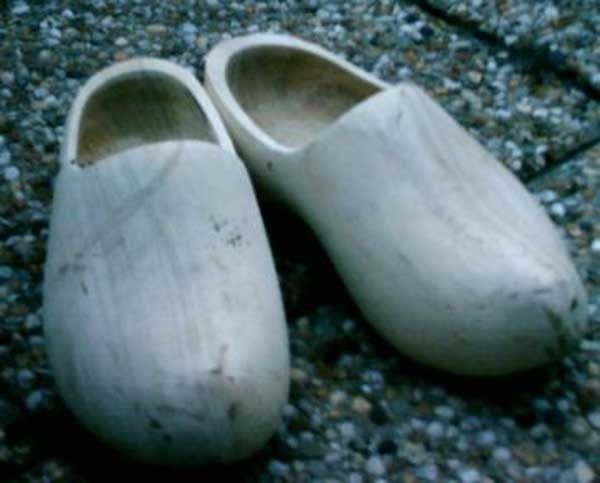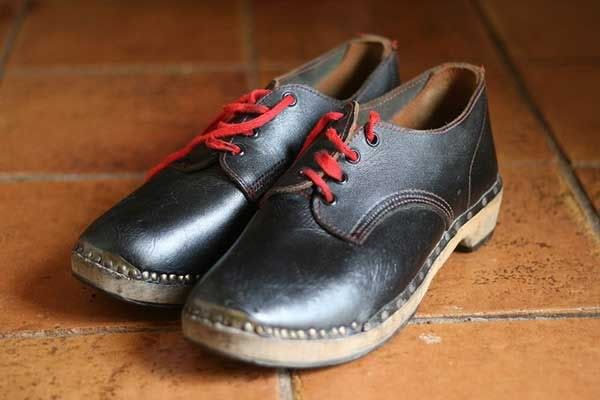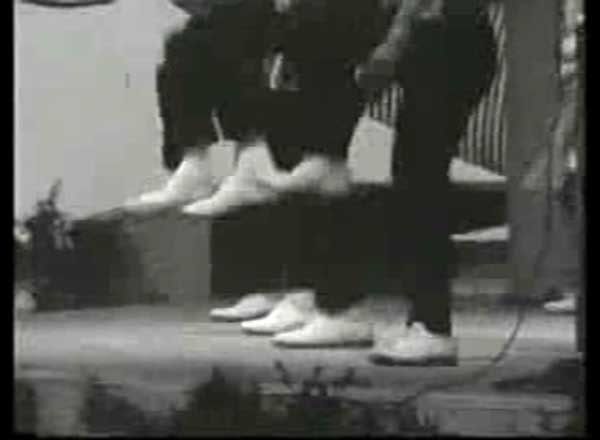Most Shufflers get bored with running man, and lets face it, a move you can learn in 5 minutes can get pretty dull after a few months.
The move popularised by one hit wonder McHammer (1990)was a common sight in aerobic gyms across the world for a decade by then. It's what people looked like on a gym tread mill. Running on the spot was also a warm up exercise for sportspeople across the world, as well as dancers.
McHammers running man was often derided as his failed attempt at Michael Jacksons Moonwalk. It was too hard for McHammer, so he did this gym exercise instead.
McHammer's only hit U can't touch this, is a classic 1980's gym workout music video, like former Melbourne girl Olivia Newton-John did in 1981 with (lets get) Physical and the frightening Jazzercise - Move your Boogie Body of 1982...oooh yes, it is as bad as it sounds, but the video tapes sold more than records.
So people like McHammer jumped on the gym bandwagon and did a McHammersize track, complete with cheesy lycra/spandex booty in your face. To give you something to look at while exercising in front of your TV.
- McHammers - U Can't Touch This, is not all that original either, it's just a remix of Rick James 1981 hit Super Freak.
Jazzercise - Move your Boogie Body 1982
McHammersize. MC Hammer - U Can't Touch This (1990)
McHammer was probably the last of the genre, thank god ;) In 1990 Wall Street had just collapsed and triggered global recession and the Berlin Wall had been torn down by ordinary people on both sides of it, just fed up with the whole superpower, superego trip Russia and America had been on for a lifetime.
It was a brave new world and we didn't want anything to do with the one we'd just torn down, we were sick of it. Like life was the running man, you run but you go nowhere.
Because of Melbourne's large and long established Celtic community ( mostly Irish, Scottish,Welsh ) Celtic dance was our first stop for inspiration when wanted the foundation to create a new dance for a new era.
The so called shuffle 'T Step' is the classic Shuffle. It's a simplified version of Celtic Dance.
I'd recommend shufflers who are tired of Running Man to have a look at this stuff. Because that's what we did in the creation of the shuffle when we needed inspiration.
You will find enough steps in the first 60 seconds of the opening solo of 'Feet of flames' Warriors from Riverdance in the vid below, to keep you busy all year.
For all you crews looking for inspiration...
You will see synchronised choreography for 30 members so tight, you will weep with tears of joy. And in the vids are original Melbourne Shufflers, who auditioned in Melbourne and landed roles to tour the world with Riverdance in the mid 1990's. All done live on stage in front of picky audiences who love excellence in dance, just like shufflers today.
And the more you see it the more you see the brilliance of the artistry that has been cherished for centuries. Like fine interlaced Celtic artwork itself, whether on shields, swords and jewellery, or in sacred books and carved in stone. It still has a magic buzz like no other.
Dance in Celtic culture is seen as a sacred part of it's culture, often with magical powers. There are many tales of Celtic dance transporting you to the Celtic OtherWorld.
Shuffle footwork is based on Celtic dance, Welsh, Irish and Scottish Highland mostly. Most Europeans would spot the similarities in the dance styles in a seconds.
The earliest direct linage is Clogging
More than 800 years ago Welsh  seamen danced on the wooden decks of their sailing ships in wooden clogs, and Clogging was born. Clog is from a Gaelic word (traditional Celtic language) meaning 'time'.
seamen danced on the wooden decks of their sailing ships in wooden clogs, and Clogging was born. Clog is from a Gaelic word (traditional Celtic language) meaning 'time'.
'Time' as in keeping time when dancing. The clogs were the percussion / drum section. The rest of the music usually provided by pipes, banjo's and later fiddles (violins). The dance quickly became a favourite and is still practiced centuries later, today.
Variations spread to different regions by the sailors when they were in port, often combining with local folk dance traditions to form Irish dance, Scottish Highland dance and Flamenco in Celtic Iberian/Spanish.
Clogging went on to become the foundation for tap dancing, introduced to America first by Irish/Welsh  sailors and later Celtic and European immigrants. Over the centuries regional variations emerged and local cultural dance was often included.
sailors and later Celtic and European immigrants. Over the centuries regional variations emerged and local cultural dance was often included.
The full wooden clog made way for a leather top clog around the 1400's as the dance moved inland to wooden floored dance halls and ballrooms. Such as the traditional Lancashire wooden soled clog (pic above right)
Clog dancing is also known as Stomping, which is what the oldskool Melbourne Shufflers called themselves - Stompers.
 The single biggest difference between Shuffling and other street dances today, is that Shuffling is danced 'in time', ie strictly on the beat. Your stomping foot keeping time, exactly as it's been done for centuries in clogging.
The single biggest difference between Shuffling and other street dances today, is that Shuffling is danced 'in time', ie strictly on the beat. Your stomping foot keeping time, exactly as it's been done for centuries in clogging.
Clogging, or Stomping as it was called locally, was the standard dance style in Melbourne for much of the 1960's to 1980's as traditional folk dance became popular in the folk revival years. Melbourne has a very large Celtic population. The steps fitted as easily with pub rock as they did with electronic dance or traditional Irish jigs.
It's from here the Melbourne Shuffle inherited it's core basic steps. All the instantly recognisable shuffle moves are in traditional clogging.
Hardstyle (Stomping), Shuffling (sideways movement by twisting heel/toe) kicks, running man, glides.
- read more and see vids : Clogging: The Source of the Melbourne Shuffle
The big hit Irish Dance stage show Riverdance hit the world stage mid 1990's just a few years after the Shuffle started, and really kicked interest in Shuffling over the moon.
Celtic dance has been around for many centuries, as well as the Celtic dance music styles, the jig (gigue) and reel.
These are basically melody loops. The musicians would play a 4, 8 or 16 bar melody then repeat it 4 times often getting a bit faster each time, then change tunes, They could go on for as long as people wanted to dance. Exactly like DJ mix today.
You could go on all night with fresh musician's 'sitting in' when the other musicians got tired. All without missing a beat.
This is a dance style that has lasted centuries and still has people in awe with the skill and pleasure this extraordinary dance brings.
In the 1700's it was actually outlawed by the English Monarchy along with playing Celtic pipes and wearing tartan. The penalty was death - yes seriously. The law lasted for 50 years.
So we figured something that had survived wars and death threats, was something that had soul and spirit and freedom, just like we felt at the end of the Cold War.
These 5 vids are taken from live Riverdance and feet Of Fire performances, no trick photography, no quick editing to make it look faster, just well practiced dance.
This is the Irish styled celtic dance, the arms are generally kept firm at the sides, in Scottish celtic dancing the arms are used a lot more, such as in The Highland Fling and Sailors Hornpipe. This arms-at-the-side thing is a common sight today in Shuffling, with attention on the footwork.
Scottish highland styled arm work (G.Shepherd 1994)
There were a number of very well known oldskool shufflers who did great intricate Irish styled footwork. I even have footage of a famous shuffler who did variations of jigs, sailors horn pipe etc, and The Goodies, Tim Brooke Taylor's 'I'm A Teapot' routine - excellent :)

A common sight at oldskool parties, shuffle girls with traditional Irish Dance skirt and stockings. (G.Shepherd 1994)
You'll hear the traditional pipes, and all the footwork is strict Irish dance - the original tap dancing introduced to New York by Welsh and Irish Immigrants in the 1800's.
Remember the footwork is in strict time with the music, the tapping sound from the heel and toes are used as percussion instruments as well as feet. Originally the shoes were chunky wooden soled ankle boots, now they have small metal plates.
If you wanted a slight pause you would time your footwork to include a small leap where you could change feet and leg positions ready for the next sequence, landing precisely on the beat.
You will also see costumes with reflective lines and patches inspired by Melbourne's Phats.
Riverdance is based on stories from Celtic Mythology.
In Celtic Culture women and men are honoured as great warriors, heroes, champions and artists. There is never any question or suggestion that girls can't dance. Any oldskool celtic shuffle girl could dance a guy on the dancefloor into the ground, with ease... ;)
In Celtic tales a young male warrior would often have to fight a female champion to prove his worth. They could never beat her, they could only survive the test.
A shuffler will need 5 hard years of training to just do the steps of the synchronised routines, and 5 more years to make them brilliant.
SHUFFLE LANGUAGE
For shufflers wanting to increase their shuffle vocabulary ( 1 move = 1 'word'), here's a clear and brilliant example of how it is done.
Take note of the first vid in the series below. Watch the lead male character, the guy with the mask and Celtic X on his chest.
Feet Of Flames Warriors, is about the noble, but often nasty, celtic warrior class. To illustrate that, the choreography uses para-military uniforms that would immediately suggest an Army to a modern audience. Even including some marching routines if we didn't get it the first time.
To demonstrate the power and honour the warrior class has about itself, the choreography uses modern day body building poses as symbols of modern masculinity.
The poses show off different muscle groups to be judged for balance and perfection. They are based on ancient Olympic marble sculptures of Olympic athletes doing exactly the same thing.
In dance language such a simple move in between the main routines, can convey immense pride and power. They are iconic gestures of victory and the victors.
Don't limit yourselves to just a few moves, put some depth to your style. Not just global things, but local things. Draw on your own cultural tradition too, make the shuffle part of you.
Feet of Flames - Warriors
Feet of Flames - Break Out
Riverdance "Thunderstorm"
River Dance Finale~Michael Flatley & Jean Butler
And it that finale wasn't big enough for you, try this below ... lots of great feet close ups in this one too.
The opening Flamenco solo by Michael Flatley, is tribute to the Iberian Celts who have been living in modern day Spain / Portugal for 1500 years or so.
Feet of Flames - Finale

No comments:
Post a Comment